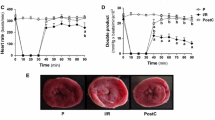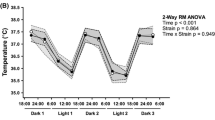Abstract
Caveolae and caveolins, structural components of caveolae, are associated with specific ion channels in cardiac myocytes. We have previously shown that P2X purinoceptor 7 (P2X7R), a ligand-gated ion channel, is increased in atrial cardiomyocytes of caveolin-1 knockout mice; however, the specific biochemical relationship of P2X7R with caveolins in the heart is not clear. The aim of this work was to study the presence of the P2X7R in atrial cardiomyocytes and its biochemical relationship to caveolin-1 and caveolin-3. Caveolin isoforms and P2X7R were predominantly localized in buoyant membrane fractions (lipid rafts/caveolae) prepared from hearts using detergent-free sucrose gradient centrifugation. Caveolin-1 knockout mice showed normal distribution of caveolin-3 and P2X7R to buoyant membranes indicating the importance of caveolin-3 to formation of caveolae. Using clear native-PAGE, we showed that caveolin-1, -3 and P2X7R contribute to the same protein complex in the membranes of murine cardiomyocytes and in the immortal cardiomyocyte cell line HL-1. Western blot analysis revealed increased caveolin-1 and -3 proteins in tissue homogenates of P2X7R knockout mice. Finally, tissue homogenates of atrial tissues from caveolin-3 knockout mice showed elevated mRNA for P2X7R in atria. The colocalization of caveolins with P2X7R in a biochemical complex and compensated upregulation of P2X7R or caveolins in the absence of any component of the complex suggests P2X7R and caveolins may serve an important regulatory control point for disease pathology in the heart.






Similar content being viewed by others
References
Alvarez JL, Mongo K, Scamps F, Vassort G (1990) Effects of purinergic stimulation on the Ca current in single frog cardiac cells. Pflugers Arch 416:189–195
Balijepalli RC, Foell JD, Hall DD, Hell JW, Kamp TJ (2006) Localization of cardiac L-type Ca(2 +) channels to a caveolar macromolecular signaling complex is required for beta(2)-adrenergic regulation. Proc Natl Acad Sci USA 103:7500–7505
Barbuti A, Terragni B, Brioschi C, DiFrancesco D (2007) Localization of f-channels to caveolae mediates specific beta2-adrenergic receptor modulation of rate in sinoatrial myocytes. J Mol Cell Cardiol 42:71–78
Barth K, Weinhold K, Guenther A, Linge A, Gereke M, Kasper M (2008) Characterization of the molecular interaction between caveolin-1 and the P2X receptors 4 and 7 in E10 mouse lung alveolar epithelial cells. Int J Biochem Cell Biol 40:2230–2239
Barth K, Blasche R, Kasper M (2010a) T1alpha/podoplanin shows raft-associated distribution in mouse lung alveolar epithelial E10 cells. Cell Physiol Biochem 25:103–112
Barth K, Pfleger C, Linge A, Sim JA, Surprenant A, Steinbronn N, Strasser RH, Kasper M (2010b) Increased P2X7R expression in atrial cardiomyocytes of caveolin-1 deficient mice. Histochem Cell Biol 134:31–38
Bauernfeind F, Ablasser A, Bartok E, Kim S, Schmid-Burgk J, Cavlar T, Hornung V (2010) Inflammasomes: current understanding and open questions. Cell Mol Life Sci 68:765–783
Bossuyt J, Taylor BE, James-Kracke M, Hale CC (2002) The cardiac sodium–calcium exchanger associates with caveolin-3. Ann NY Acad Sci 976:197–204
Boumechache M, Masin M, Edwardson JM, Gorecki DC, Murrell-Lagnado R (2009) Analysis of assembly and trafficking of native P2X4 and P2X7 receptor complexes in rodent immune cells. J Biol Chem 284:13446–13454
Cho WJ, Chow AK, Schulz R, Daniel EE (2007) Matrix metalloproteinase-2, caveolins, focal adhesion kinase and c-Kit in cells of the mouse myocardium. J Cell Mol Med 11:1069–1086
Cho WJ, Chow AK, Schulz R, Daniel EE (2010) Caveolin-1 exists and may function in cardiomyocytes. Can J Physiol Pharmacol 88:73–76
Dubyak GR (2007) Go it alone no more—P2X7 joins the society of heteromeric ATP-gated receptor channels. Mol Pharmacol 72:1402–1405
Faria RX, Defarias FP, Alves LA (2005) Are second messengers crucial for opening the pore associated with P2X7 receptor? Am J Physiol Cell Physiol 288:C260–C271
Galbiati F, Razani B, Lisanti MP (2001) Caveolae and caveolin-3 in muscular dystrophy. Trends Mol Med 7:435–441
Garcia-Marcos M, Pochet S, Tandel S, Fontanils U, Astigarraga E, Fernandez-Gonzalez JA, Kumps A, Marino A, Dehaye JP (2006) Characterization and comparison of raft-like membranes isolated by two different methods from rat submandibular gland cells. Biochim Biophys Acta 1758:796–806
Garg V, Jiao J, Hu K (2009a) Regulation of ATP-sensitive K+ channels by caveolin-enriched microdomains in cardiac myocytes. Cardiovasc Res 82:51–58
Garg V, Sun W, Hu K (2009b) Caveolin-3 negatively regulates recombinant cardiac K(ATP) channels. Biochem Biophys Res Commun 385:472–477
Garlanda C, Parravicini C, Sironi M, De Rossi M, Wainstok de Calmanovici R, Carozzi F, Bussolino F, Colotta F, Mantovani A, Vecchi A (1994) Progressive growth in immunodeficient mice and host cell recruitment by mouse endothelial cells transformed by polyoma middle-sized T antigen: implications for the pathogenesis of opportunistic vascular tumors. Proc Natl Acad Sci USA 91:7291–7295
Hagiwara Y, Sasaoka T, Araishi K, Imamura M, Yorifuji H, Nonaka I, Ozawa E, Kikuchi T (2000) Caveolin-3 deficiency causes muscle degeneration in mice. Hum Mol Genet 9:3047–3054
Head BP, Patel HH, Roth DM, Lai NC, Niesman IR, Farquhar MG, Insel PA (2005) G-protein-coupled receptor signaling components localize in both sarcolemmal and intracellular caveolin-3-associated microdomains in adult cardiac myocytes. J Biol Chem 280:31036–31044
Kahlenberg JM, Lundberg KC, Kertesy SB, Qu Y, Dubyak GR (2005) Potentiation of caspase-1 activation by the P2X7 receptor is dependent on TLR signals and requires NF-kappaB-driven protein synthesis. J Immunol 175:7611–7622
Lapidos KA, Kakkar R, McNally EM (2004) The dystrophin glycoprotein complex: signaling strength and integrity for the sarcolemma. Circ Res 94:1023–1031
Li J, Liu D, Ke HZ, Duncan RL, Turner CH (2005) The P2X7 nucleotide receptor mediates skeletal mechanotransduction. J Biol Chem 280:42952–42959
Lin E, Hung VH, Kashihara H, Dan P, Tibbits GF (2009) Distribution patterns of the Na+-Ca2+ exchanger and caveolin-3 in developing rabbit cardiomyocytes. Cell Calcium 45:369–383
Markandeya YS, Fahey JM, Pluteanu F, Cribbs LL, Balijepalli RC (2011) Caveolin-3 regulates protein kinase A modulation of the Ca(V)3.2 (alpha1H) T-type Ca2+ channels. J Biol Chem 286:2433–2444
Matsuura H, Ehara T (1997) Selective enhancement of the slow component of delayed rectifier K+ current in guinea-pig atrial cells by external ATP. J Physiol 503(Pt 1):45–54
Merkle S, Frantz S, Schon MP, Bauersachs J, Buitrago M, Frost RJ, Schmitteckert EM, Lohse MJ, Engelhardt S (2007) A role for caspase-1 in heart failure. Circ Res 100:645–653
Musa H, Tellez JO, Chandler NJ, Greener ID, Maczewski M, Mackiewicz U, Beresewicz A, Molenaar P, Boyett MR, Dobrzynski H (2009) P2 purinergic receptor mRNA in rat and human sinoatrial node and other heart regions. Naunyn Schmiedebergs Arch Pharmacol 379:541–549
Nichols CB, Rossow CF, Navedo MF, Westenbroek RE, Catterall WA, Santana LF, McKnight GS (2010) Sympathetic stimulation of adult cardiomyocytes requires association of AKAP5 with a subpopulation of L-type calcium channels. Circ Res 107:747–756
Nicke A (2008) Homotrimeric complexes are the dominant assembly state of native P2X7 subunits. Biochem Biophys Res Commun 377:803–808
Parton RG, Simons K (2007) The multiple faces of caveolae. Nat Rev Mol Cell Biol 8:185–194
Patel HH, Tsutsumi YM, Head BP, Niesman IR, Jennings M, Horikawa Y, Huang D, Moreno AL, Patel PM, Insel PA, Roth DM (2007) Mechanisms of cardiac protection from ischemia/reperfusion injury: a role for caveolae and caveolin-1. Faseb J 21:1565–1574
Razani B, Lisanti MP (2001) Caveolins and caveolae: molecular and functional relationships. Exp Cell Res 271:36–44
Razani B, Woodman SE, Lisanti MP (2002) Caveolae: from cell biology to animal physiology. Pharmacol Rev 54:431–467
Schwab W, Harada H, Goetz W, Nowicki M, Witt M, Kasper M, Barth K (2007) Immunocytochemical and biochemical detection of EMMPRIN in the rat tooth germ: differentiation-dependent co-expression with MMPs and co-localization with caveolin-1 in membrane rafts of dental epithelial cells. Histochem Cell Biol 128:195–203
Sharma V, Sharma A, Saran V, Bernatchez PN, Allard MF, McNeill JH (2011) β-receptor antagonist treatment prevents activation of cell death signaling in the diabetic heart independent of its metabolic actions. Eur J Pharmacol 657:117–125
Shen JB, Pappano AJ, Liang BT (2006) Extracellular ATP-stimulated current in wild-type and P2X4 receptor transgenic mouse ventricular myocytes: implications for a cardiac physiologic role of P2X4 receptors. Faseb J 20:277–284
Shen JB, Cronin C, Sonin D, Joshi BV, Gongora Nieto M, Harrison D, Jacobson KA, Liang BT (2007) P2X purinergic receptor-mediated ionic current in cardiac myocytes of calsequestrin model of cardiomyopathy: implications for the treatment of heart failure. Am J Physiol Heart Circ Physiol 292:H1077–H1084
Solle M, Labasi J, Perregaux DG, Stam E, Petrushova N, Koller BH, Griffiths RJ, Gabel CA (2001) Altered cytokine production in mice lacking P2X(7) receptors. J Biol Chem 276:125–132
Sun W, Hu K (2010) Role for SUR2A in coupling cardiac K(ATP) channels to caveolin-3. Cell Physiol Biochem 25:409–418
Vacca F, Amadio S, Sancesario G, Bernardi G, Volonte C (2004) P2X3 receptor localizes into lipid rafts in neuronal cells. J Neurosci Res 76:653–661
Venema VJ, Ju H, Zou R, Venema RC (1997) Interaction of neuronal nitric-oxide synthase with caveolin-3 in skeletal muscle. Identification of a novel caveolin scaffolding/inhibitory domain. J Biol Chem 272:28187–28190
Volonte D, McTiernan CF, Drab M, Kasper M, Galbiati F (2008) Caveolin-1 and caveolin-3 form heterooligomeric complexes in atrial cardiac myocytes that are required for doxorubicin-induced apoptosis. Am J Physiol Heart Circ Physiol 294:H392–H401
Weinhold K, Krause-Buchholz U, Rodel G, Kasper M, Barth K (2010) Interaction and interrelation of P2X7 and P2X4 receptor complexes in mouse lung epithelial cells. Cell Mol Life Sci 67:2631–2642
Woodman SE, Park DS, Cohen AW, Cheung MW, Chandra M, Shirani J, Tang B, Jelicks LA, Kitsis RN, Christ GJ, Factor SM, Tanowitz HB, Lisanti MP (2002) Caveolin-3 knock-out mice develop a progressive cardiomyopathy and show hyperactivation of the p42/44 MAPK cascade. J Biol Chem 277:38988–38997
Ye B, Balijepalli RC, Foell JD, Kroboth S, Ye Q, Luo YH, Shi NQ (2008) Caveolin-3 associates with and affects the function of hyperpolarization-activated cyclic nucleotide-gated channel 4. Biochemistry 47:12312–12318
Young MT, Pelegrin P, Surprenant A (2007) Amino acid residues in the P2X7 receptor that mediate differential sensitivity to ATP and BzATP. Mol Pharmacol 71:92–100
Author information
Authors and Affiliations
Corresponding author
Rights and permissions
About this article
Cite this article
Pfleger, C., Ebeling, G., Bläsche, R. et al. Detection of caveolin-3/caveolin-1/P2X7R complexes in mice atrial cardiomyocytes in vivo and in vitro. Histochem Cell Biol 138, 231–241 (2012). https://doi.org/10.1007/s00418-012-0961-0
Accepted:
Published:
Issue Date:
DOI: https://doi.org/10.1007/s00418-012-0961-0




